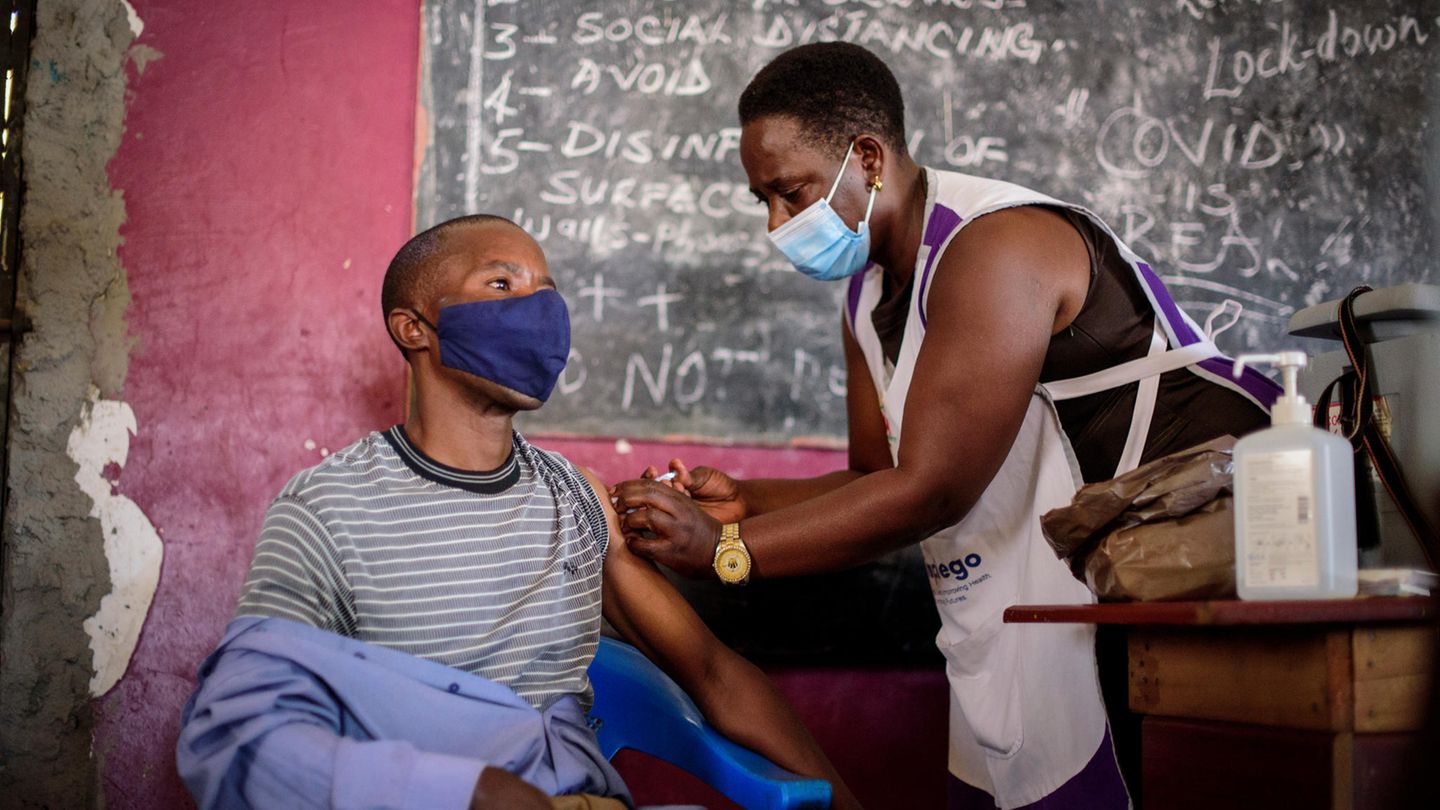Africa came through the pandemic well. At least that’s what the numbers on infection suggest – but they have their pitfalls. In the end, could more people have been infected than expected?
Omicron spread across the globe from South Africa. For representatives of the World Health Organization (WHO), this is not surprising. Experts on the panel warned that if the gap between the unvaccinated and the vaccinated widened further, it would be the ideal breeding ground for further mutations. The low vaccination rate in South Africa could have been one reason why a new virus variant has formed, it was said again and again. In the country with just over 60 million inhabitants, just 28 percent are basic immunized, a third are simply vaccinated ().
The fact that the humanitarian catastrophe has not happened so far borders on a miracle. The living conditions of the population are precarious in many parts, hygiene and protection against infection in the townships around the metropolitan regions, for example, are almost impossible. And yet South Africa and the rest of the continent came through the pandemic relatively unscathed. Northern countries such as Tunisia, Egypt and Morocco were hit harder than the south. Since the beginning of the pandemic, the country, which has a population of more than one billion, has recorded just over eleven million people infected with corona. For comparison: Germany, with a population of 83 million, has more than twelve million infections in the same period.
Reporting system with loopholes and silent infestation
In fact, however, the low number of infections on the continent is not an indication of a calm pandemic. WHO officials expect the number of new infections to be seven times higher than reported. There are several reasons for that. Experts assume that the low average age of 17 years could have weakened the wave. At least in terms of the number of deaths. With 151,000 deaths, the continent is only responsible for three percent of the global pandemic victims.
In addition, unlike in richer parts of the world, the number of infections and deaths is not systematically recorded. “We are aware that our problems with our surveillance system on our continent, such as access to testing material, have led to an underestimation of cases,” admitted Matshidiso Moeti, medical doctor and WHO Regional Director for Africa.
Contrary to what the numbers might suggest, Africa has experienced a silent outbreak. That suggests one. Together with local experts, the researchers tested over 2,300 people for antibodies against the coronavirus at various locations in Ethiopia in August 2020 and April 2021. Half of the subjects worked in two teaching hospitals. The researchers also examined the spread of the virus in rural and urban areas.
The virus spread particularly strongly in medical facilities. While 31 percent of hospital staff were still infected in November 2020, the number had almost doubled by February 2021. In urban regions, the researchers recorded a 40 percent increase in infections. By April, the figure had risen to 73 percent. In rural areas, the figure rose from 18 percent in December/January to 31 percent (February/March). “Other sporadic reports sometimes give even higher figures, about 60 percent among blood donors in South Africa,” the report said. In addition, the data coincided with national reports on the “increased burden of critical patient care”.
Patent-free vaccine in production
According to the researchers, the problem is the low vaccination rate. According to the African Union, less than 12 percent of the population had been fully vaccinated by early February. The EU wants to help here. Commission chief Ursula von der Leyen announced that a further 125 million euros would be made available for vaccination programs in Africa. Previously, 300 million euros had been promised. This is intended to train medical teams and support research, such as the determination of virus variants. The goal is to “share at least 450 million doses of vaccine with African countries by this summer,” emphasized von der Leyen.
It is the first time that European foreign and health ministers are discussing possible improvements in cooperation in the fight against the pandemic. “Covid has made it clear to us that health must be seen in a global context,” said Kyriakides. With the money for the so-called ACT Accelerator, a pool with 600 million vaccine doses can be created, 700 million tests bought and the treatment of 120 million patients made possible, according to the WHO.
Previous donations, which were distributed to poor countries via the Covax initiative, for example, are likely to have caused some disappointment. For example in Nigeria. According to the national health authority, one million doses of the Astrazeneca vaccine had to be destroyed there in December. According to information from the Reuters news agency, the authorities only had four to six weeks to vaccinate all doses. After that they expired. The CDC recently counted 2.8 million vaccine doses for all of Africa, which therefore had to be destroyed. Something similar happened in the Congo: Because the donation deliveries had been announced too quickly, the Democratic Republic had sent back a delivery of 1.3 million cans to the Covax initiative.
However, the continent may soon no longer be dependent on donations from abroad. A research and manufacturing center in South Africa selected by the WHO developed a patent-free vaccine based on the novel mRNA technology within a few weeks, the organization announced. In June 2021, the WHO selected the biotechnology company Afrigen Biologics and Vaccines in Cape Town as the hub. Testing of the new vaccine could begin in the fall. The WHO emphasizes that the laboratory uses publicly available technology and does not infringe any patents. The technology is to be made available to companies in other poorer countries. The laboratory also trains staff. In February, further countries are to be named in which production is to take place. Argentina and Brazil are already fixed as locations.
The end of the pandemic?
And the country has more good news to report: As the WHO announced, the corona pandemic could soon become an endemic. “We believe that we are now moving towards a kind of endemic life with the virus, especially with the expected increase in vaccination,” said WHO Regional Officer Moeti. Africa is the first region in the world for which the organization has announced an endemic phase.
But Moeti is also satisfied with the course of the pandemic so far. “Despite all the obstacles, including the great inequality in vaccine distribution, we have faced Covid-19 with resilience and determination. Africa’s long experience in dealing with epidemics has helped us a lot.” According to the aid organization Unicef, the pandemic has helped expand capacity to treat Covid-19. The continent now has 20 intensive care beds per million inhabitants. In view of the high population, this may not seem like much. Two years ago, however, there were less than half as many beds available. Africa thus has almost 27,500 intensive care beds. For comparison: Germany has 25,000.
How the virus can be handled in the future is still uncertain. Due to the low vaccination rate, it cannot currently be ruled out that a new virus variant will develop. Should this happen, it is to be hoped that the immune system in the population will prevent the worst from happening.
Sources: ,, , “, , , , with material from DPA
Source: Stern




